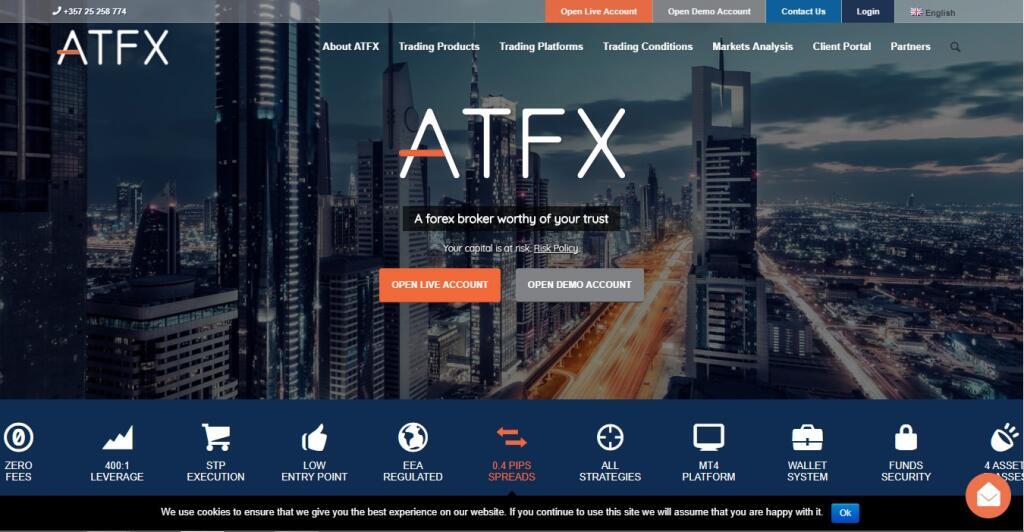
For example, a production facility that is fairly labor intensive would likely determine that the more labor hours worked, the higher the overhead will be. As a result, management would likely view labor hours as the activity base when applying overhead costs. Overhead costs are all the everyday business expenses that aren’t directly involved in creating your product or service.
While administrative overhead includes front office administration and sales, manufacturing overhead is all of the costs that a manufacturing facility incurs, other than direct costs. Suppose a simple factory makes two products — call them Product A and Product B. The factory needs no direct materials (yes, that means it makes products out of thin air; please suspend your disbelief). It paid $1,600 in direct labor to its workers and $400 for overhead, knowing that each product required half of the direct labor costs — $800 each.
During that same month, the company logs 30,000 machine hours to produce their goods. For example, overhead costs may be applied at a set rate based on the number of machine hours or labor hours required for the product. Let’s say Build-It Construction uses ten tons of gravel on Job 110 — if it wasn’t for that one project, the cost wouldn’t exist, right? Of course it wouldn’t be fair for Job 110 to shoulder all the expenses for that piece of equipment like a direct cost. Instead, every project that uses the dozer has some responsibility for it needing oil, service work, etc. For a better understanding, manufacturing overhead costs are classified into three types, depending on how a business’s manufacturing processes change every production season and influence the company’s spending.
- Overhead is not allocated to raw materials inventory, since the operations giving rise to overhead costs only impact work-in-process and finished goods inventory.
- Again, if Job 110 didn’t exist, six hours never go to payroll — they’re a direct cost to Job 110.
- In this example, the $900 that is now in finished goods inventory is reassigned to the cost of goods sold.
- The more accurately you can measure how overhead impacts each job’s bottom line, the more accurate your picture of job performance can be.
- Ideally, companies must make a list of the direct cost that they incur.
If your manufacturing overhead rate is low, it means that the business is using its resources efficiently and effectively. On the other hand, a higher rate may indicate a lagging production process. This means 16% of your monthly revenue will go toward your company’s overhead costs. Why does it matter if you assign a product $900 or $500 of the costs in the example above?
Why It Matters: Allocating Manufacturing Overhead
This result indicates that for every dollar that Joe’s manufacturing company earns, he’s spending $0.54 in overhead. Watch this video to see how to dispose of overallocated or under-allocated overhead. Provisional overhead amounts appear on project reports and on screens for display only; they are not posted to the database. In other words, determining the cost of an item is one tool in the cost accountant’s toolbox and will not answer every question. Assuming they all have identical bedrooms and equal kitchen privileges, it’s fair to split the rent split evenly.
Once we have determined our allocation rate, we apply that rate to each product or product line in order to assign costs to individual items or batches. After reviewing the product cost and consulting with the marketing department, the sales prices were set. The sales price, cost of each product, and resulting gross profit are shown in Figure 9.6. Barry thinks of his education as a job and spends forty hours a week in class or studying.
This can also mean better data for estimating, which in turn can protect your bottom line on future jobs. But this is the best approach possible since overheads usually do not have a cause effect relationship that can be traced directly to any cost object. The best that can be done in such a scenario is to reduce the amount of arbitrariness. Harold Averkamp (CPA, MBA) has worked as a university accounting instructor, accountant, and consultant for more than 25 years. The Ascent is a Motley Fool service that rates and reviews essential products for your everyday money matters.
Why You Need To Know Your Overhead Rate
As you assign these costs, they’re transferred to a specific asset account for each item. This inventory balance is important to your report, as this is the valuation of the goods available for sale. You can allocate overhead in any way you choose based on the underlying calculation driver. If one product takes up 70% of the warehouse, the square footage can allocate the costs at $700 for one good and $300 for the other. You need to complete a journal entry to move the costs from manufacturing overhead, which is a general asset pool, to finished goods, which is a more specific asset account.
The Extraordinary Life of Anthony Williams – Baltimore Beat
The Extraordinary Life of Anthony Williams.
Posted: Wed, 06 Sep 2023 02:10:27 GMT [source]
Overhead allocation is the apportionment of indirect costs to produced goods. In many businesses, the amount of overhead to be allocated is substantially greater than the direct cost of goods, so the overhead allocation method can be of some importance. This measurement can be particularly helpful when creating a budget since he’ll be able to estimate sales for the budget period and then calculate indirect expenses based on the overhead rate. To calculate the manufacturing overhead, identify the manufacturing overhead costs that help production run as smoothly as possible. Suppose that, over some period of time, the accrued wages for indirect labor, accumulated depreciation, accounts payable and utilities are equal to $500,000.
Prime Cost Percentage Method
Once a company determines the overhead rate, it determines the overhead rate per unit and adds the overhead per unit cost to the direct material and direct labor costs for the product to find the total cost. The overhead rate is calculated by adding your indirect costs and then dividing them by a specific measurement such as machine hours, sales totals, or labor costs. Direct costs are the costs that directly impact production such as direct labor, direct materials, and manufacturing supplies. The predetermined overhead rate is an estimation of overhead costs applicable to “work in progress” inventory during the accounting period. This is calculated by dividing the estimated manufacturing overhead costs by the allocation base, or estimated volume of production in terms of labor hours, labor cost, machine hours, or materials. Three common plant-wide activity bases used to allocate factory overhead costs are (1) a percentage of direct labor cost, (2) number of direct labor hours, or (3) number of machine-hours.

Such variable overhead costs include shipping fees, bills for using the machinery, advertising campaigns, and other expenses directly affected by the scale of manufacturing. Overhead allocation is important because overhead directly impacts your small business’s balance sheet and income statement. You have those expenses no matter what, and your accounting system requires you to keep track of them. Fixed overhead costs are overhead costs that don’t change in relation to your production output.
How to Calculate Overhead Rate per Employee
These indirect costs needed to keep your business going are called overhead costs. Overhead costs are the day-to-day operating expenses that aren’t directly related to the labor and production of your goods https://online-accounting.net/ and services. This includes things like rent for your business space, transportation, gas, insurance, and office equipment. Direct costs like your raw materials and labor are not included in your overhead.
5 Tips for a Perfect Farmers Market Visit Lifestyle newscenter1.tv – Newscenter1.tv
5 Tips for a Perfect Farmers Market Visit Lifestyle newscenter1.tv.
Posted: Wed, 30 Aug 2023 14:27:57 GMT [source]
A large number of overhead categories center around manufacturing, such as the expenses incurred to set up and maintain equipment, inspect products, clean factories, or keep records. Other typical examples of overhead in cost accounting include indirect labor, indirect materials, utilities, and depreciation. As another example, Mulligan Imports incurs overhead of $93,000, which it stores in an overhead cost pool. Mulligan uses a standard overhead rate of $20 per unit, which approximates its long-term experience with the relationship between overhead costs and production volumes. In September, it produces 4,500 golf club shafts, to which it allocates $90,000 (allocation rate of $20 x 4,500 units).
The company’s costs were contained in the accountant’s general ledger, which was organized by departments so as to mirror the organization chart and to provide for budgeting and control. These rates were computed by dividing each production department’s costs (its own direct costs plus the service departments’ costs allocated to it) by its machine hours. tax form 1120 Again, notice that dividing fixed manufacturing overhead by number of units makes the gross profit for the deluxe purse significantly higher than if fixed manufacturing overhead is allocated according to direct labor. By allocating fixed manufacturing overhead by machine hours, the deluxe purse is actually costing more to produce than it is selling for.
All of the first product sells, while none of the second product sells. In this example, the $900 that is now in finished goods inventory is reassigned to the cost of goods sold. The expense recognized is the total cost of goods sold, including the $900.
The prime cost is the sum of the direct labor and direct material costs of a business. To calculate the prime cost percentage, divide factory overhead by prime cost. While categorizing the direct and overhead costs, remember that some items cannot be attributed to a specific category. Some business expenses might be overhead costs for others but direct expenses for your business. A proportional method that uses G/L accounts also lets accounting professionals add complexity for finer-grain allocation control. With the help of their construction accounting software, contractors can choose to allocate only a portion from each overhead G/L account.
You can also simplify overhead cost tracking through FreshBooks accounting software to provide real-time data on your business finances. Click here to sign up for your free trial today and discover how FreshBooks can support your small business growth. Indirect materials are those that aren’t directly used in producing your product or service. To measure the efficiency with which business resources are being utilized, calculate the overhead cost as a percentage of labor cost. The lower the percentage, the more effective your business is in utilizing its resources.
